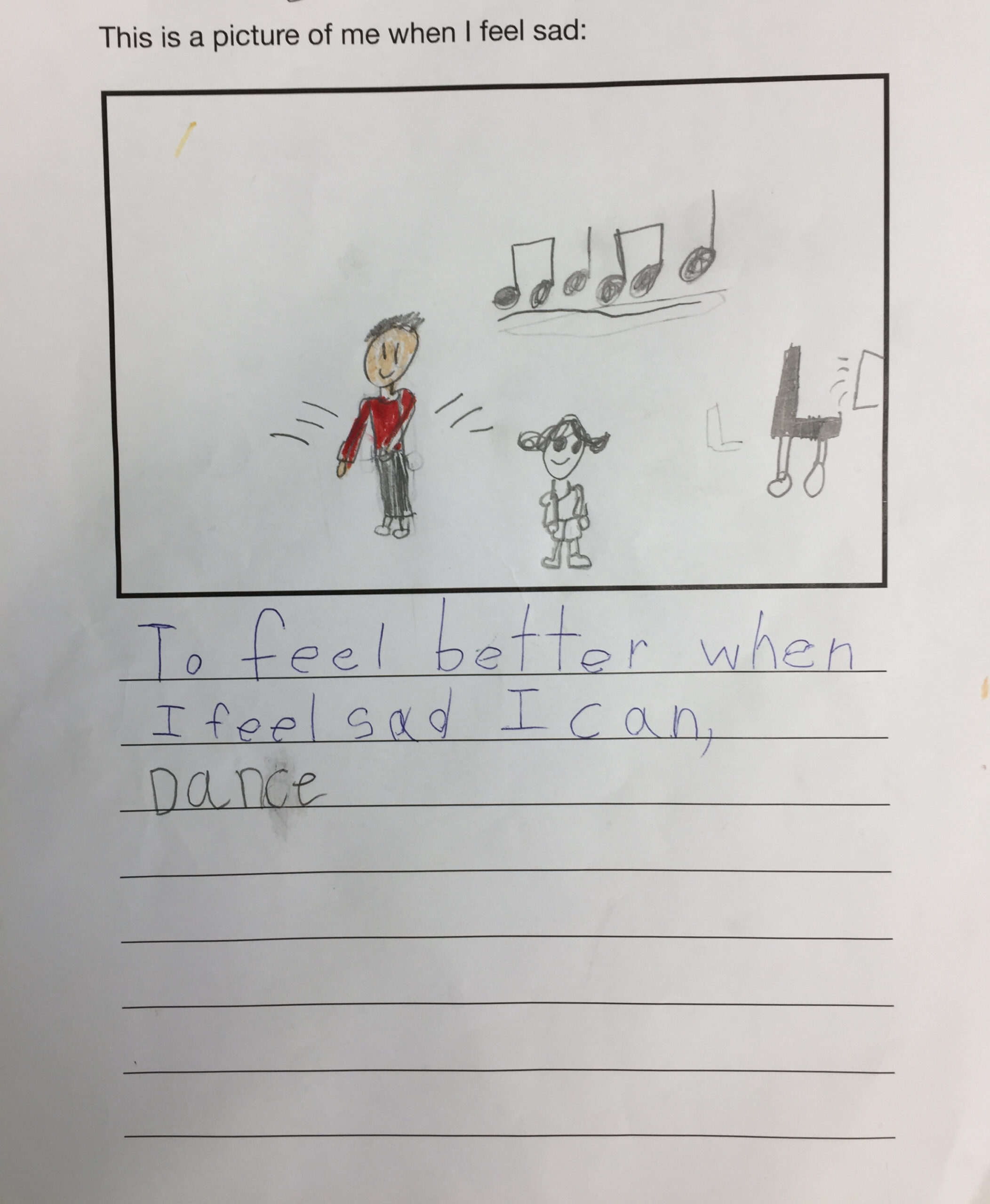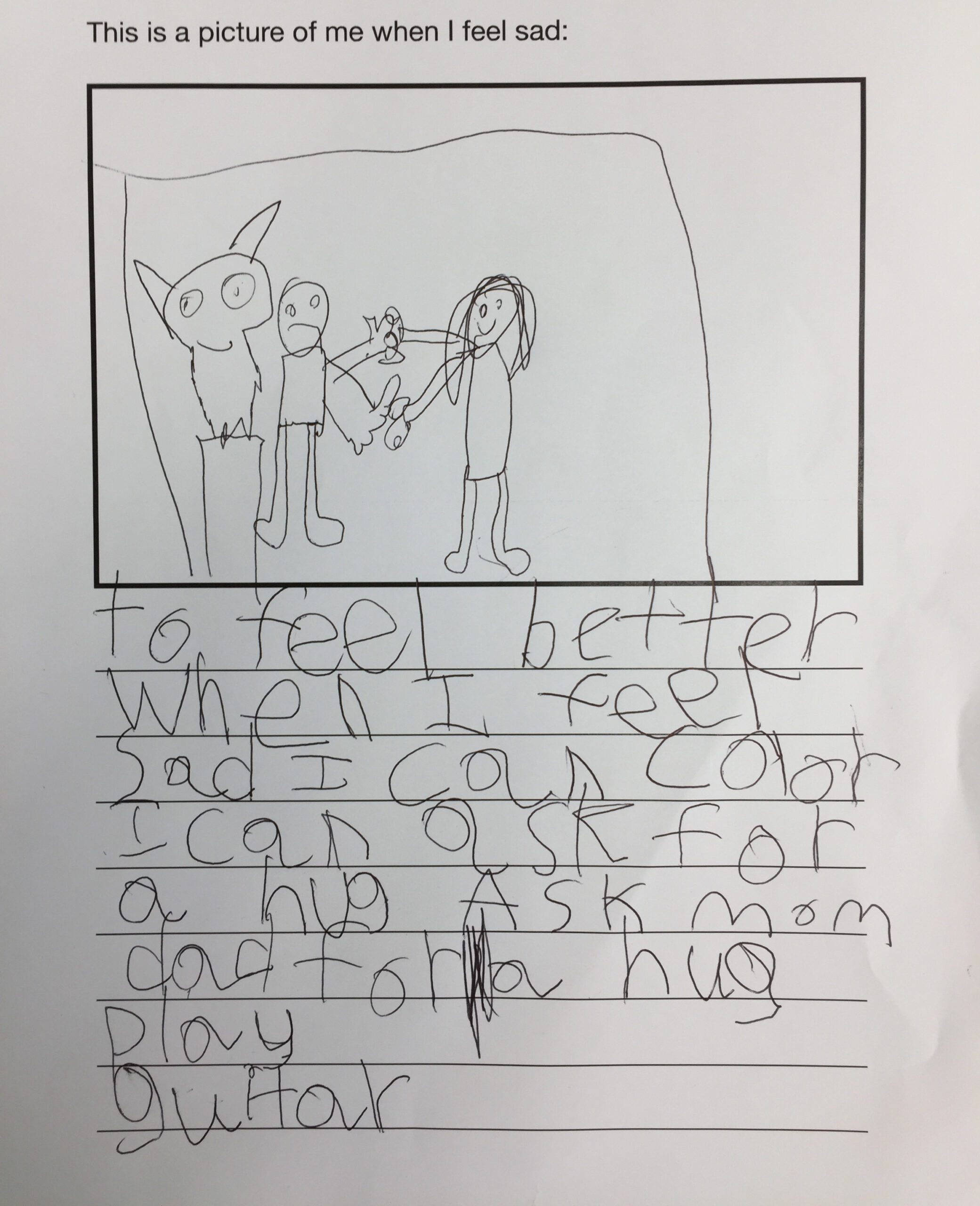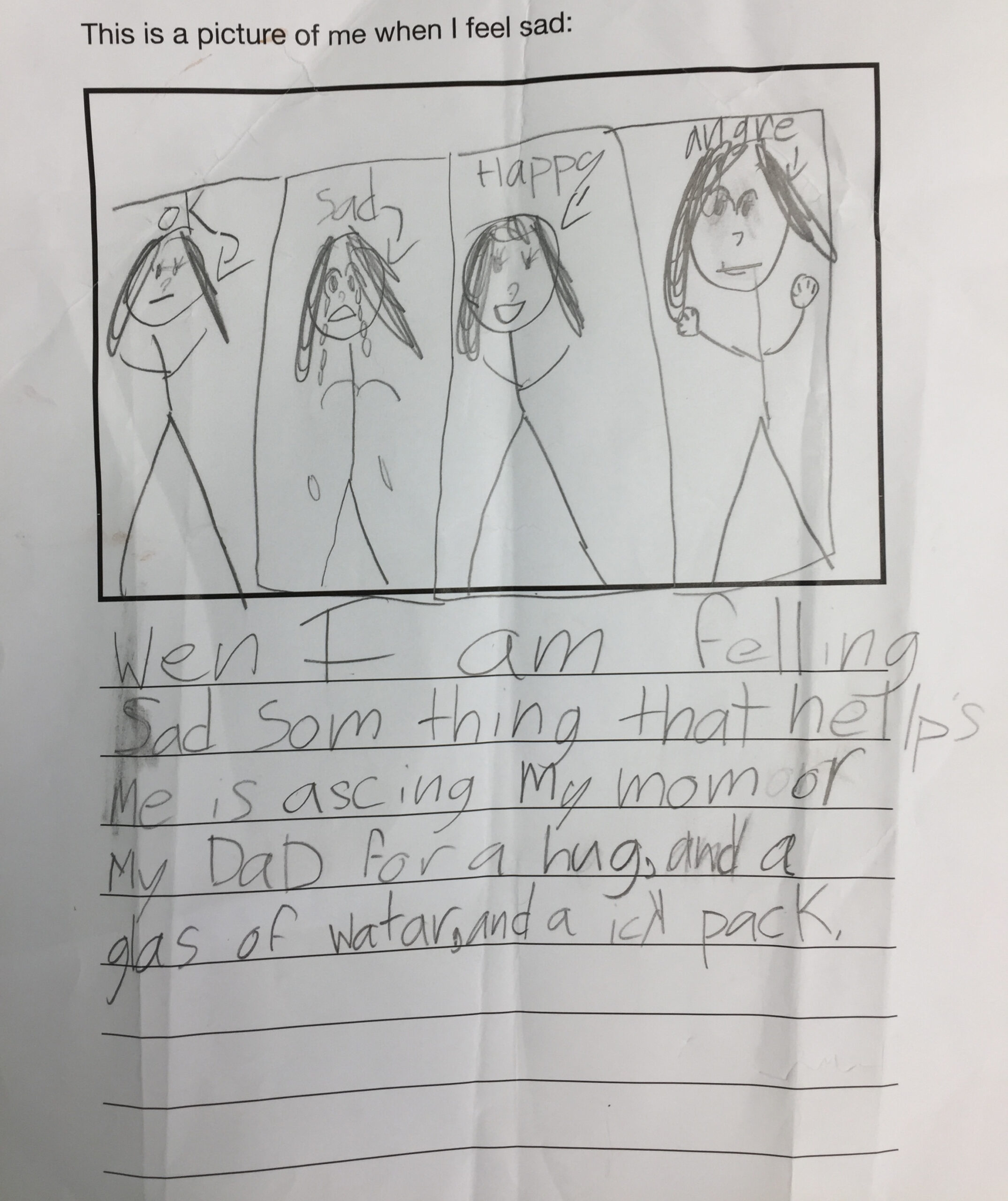Social-emotional learning, or SEL, is often spoken of as the key “missing piece” in education. Studies show that pro-social behaviors are a better indicator of a child’s future academic success than his/her reading level in early childhood. However, traditional curricula, including Benchmark and Writing and Reading Workshops, do not scaffold strategies for emotional regulation or conflict resolution skills. Following the major life changes brought about by COVID-19, many children are experiencing heightened anxiety and stress. It is more important than ever for educators to facilitate the development of social and emotional wellbeing in schools, making for happy, healthy and emotionally intelligent students.
Are you a public school, private school or a community of educators looking for ways to integrate SEL and trauma-informed teaching practices into traditional academic learning or curricula?
I offer workshops and one-on-one coaching for educators and support staff on a variety of SEL-related topics:
- Integrated SEL, inquiry-based English Language Arts lessons with CASEL-aligned goals (ex. emotional regulation, inter-personal skills development, collaboration skills development)
- Emotional Vocabulary Development using Anchor charts, Feelings Chart work & ELA integrated lessons
- Community Circles, Reflective Listening
- ELA integrated Empathy Education
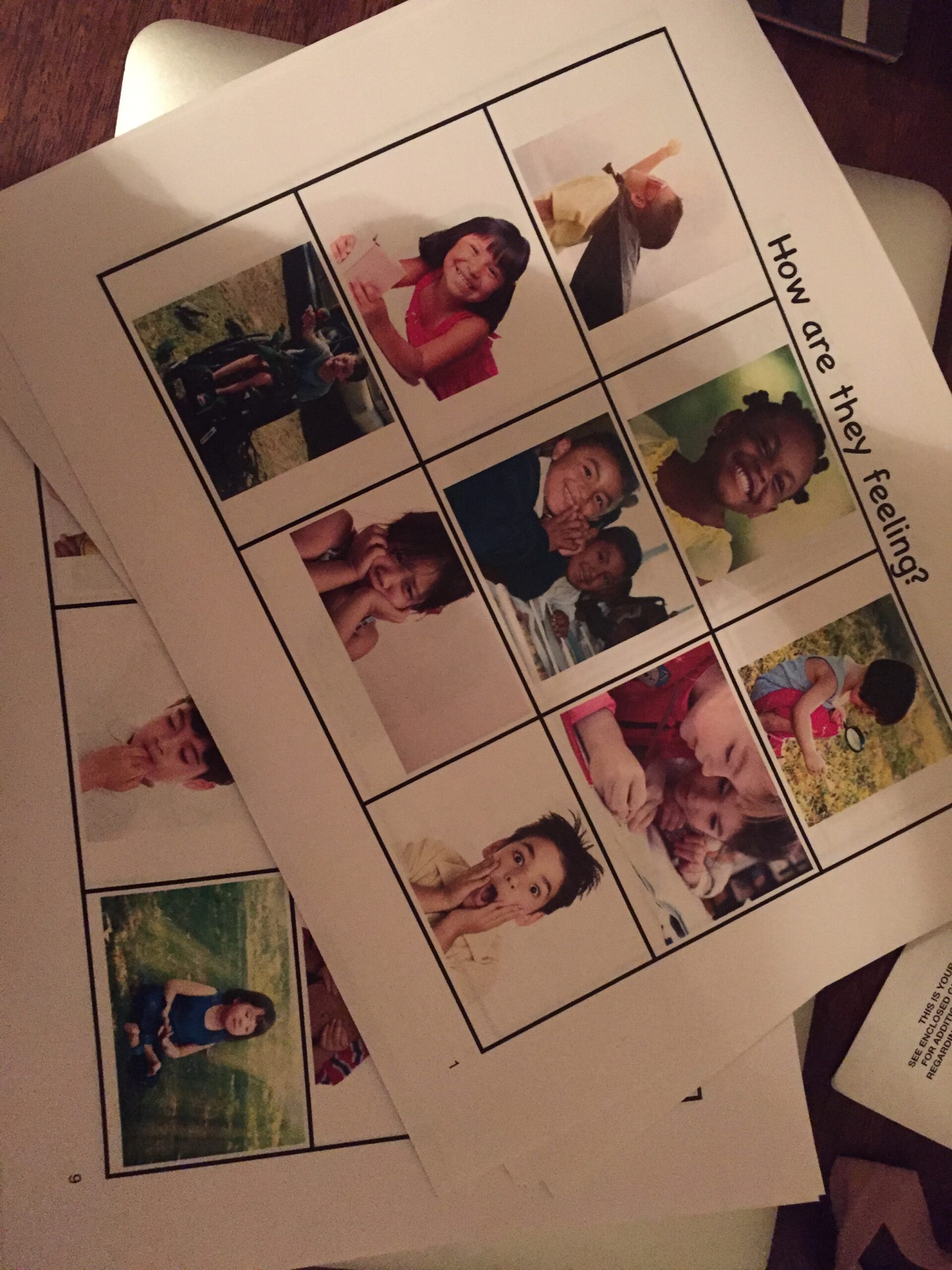
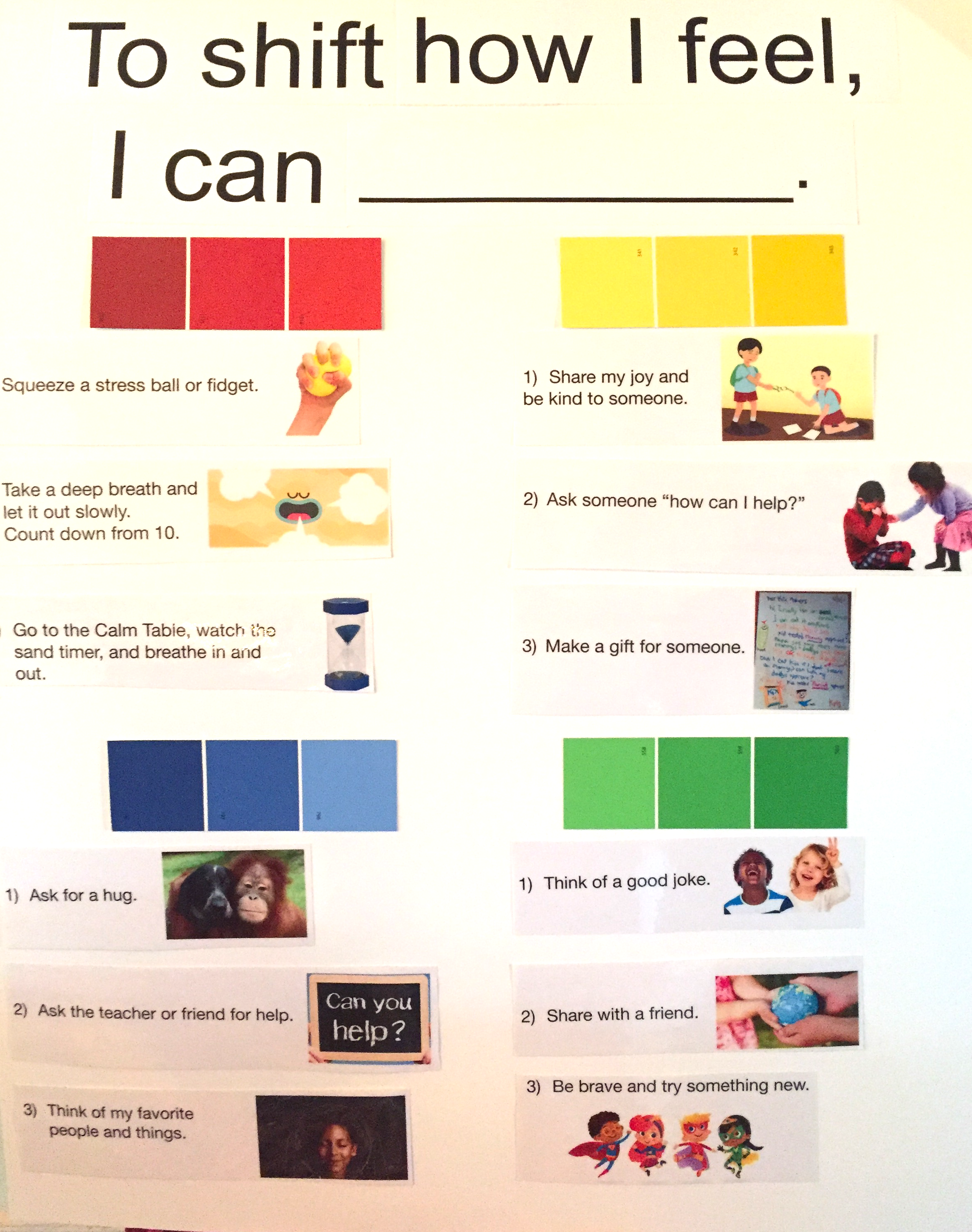
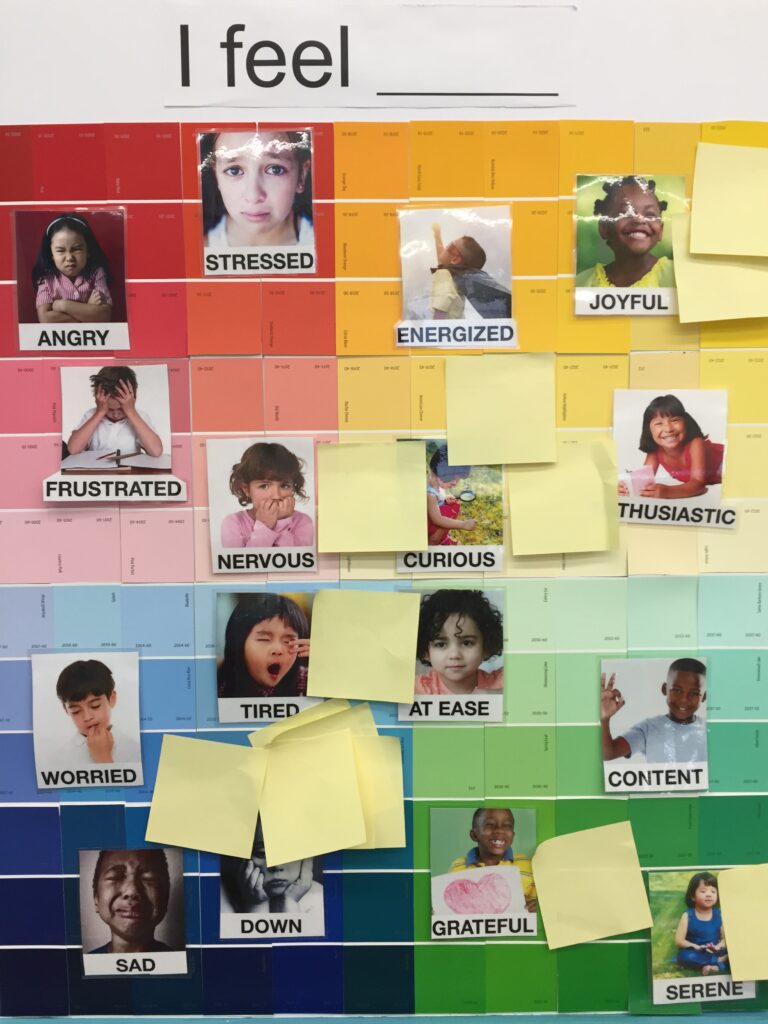
SETTING THE FOUNDATION FOR AN EMOTIONALLY LITERATE, JUST AND CONSCIOUS FUTURE
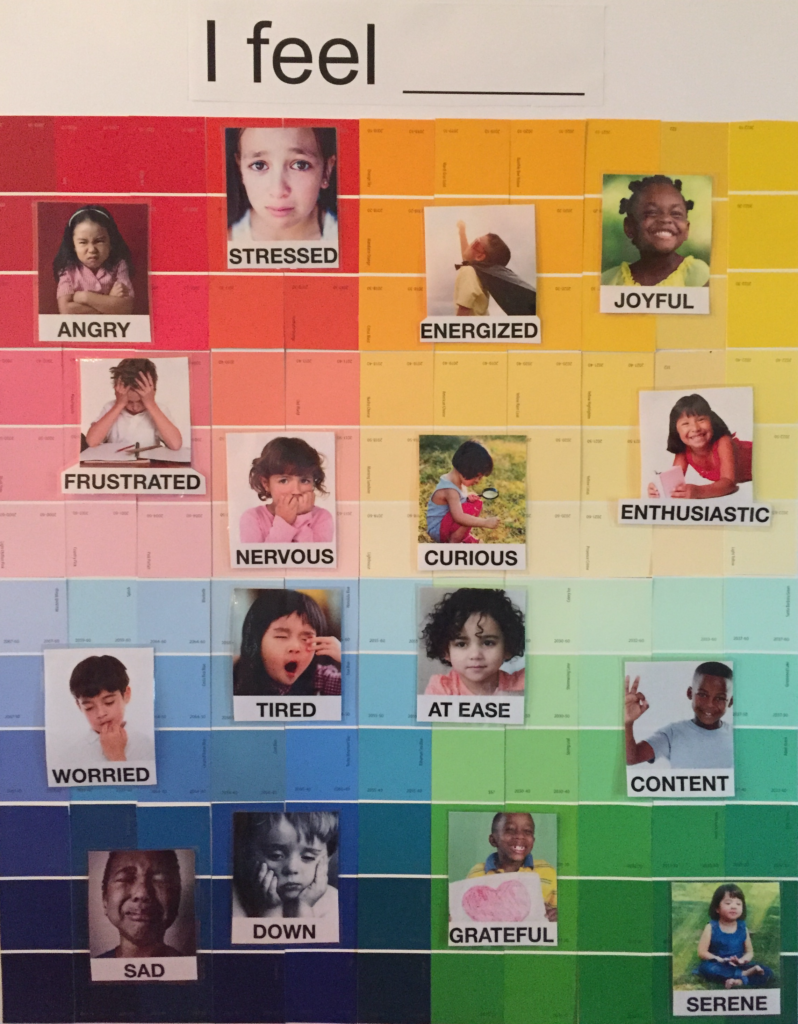
Feelings Chart
An adapted version of the visual concept of Yale’s Center for Emotional Intelligence’s Mood Meter, a tool for identifying and sorting emotions for people of all ages.
The Feelings Chart sorts emotions on a gradient scale ranging from high to low energy, pleasant to unpleasant, and is an excellent tool for facilitating emotional check ins and scaffolding emotional language development.
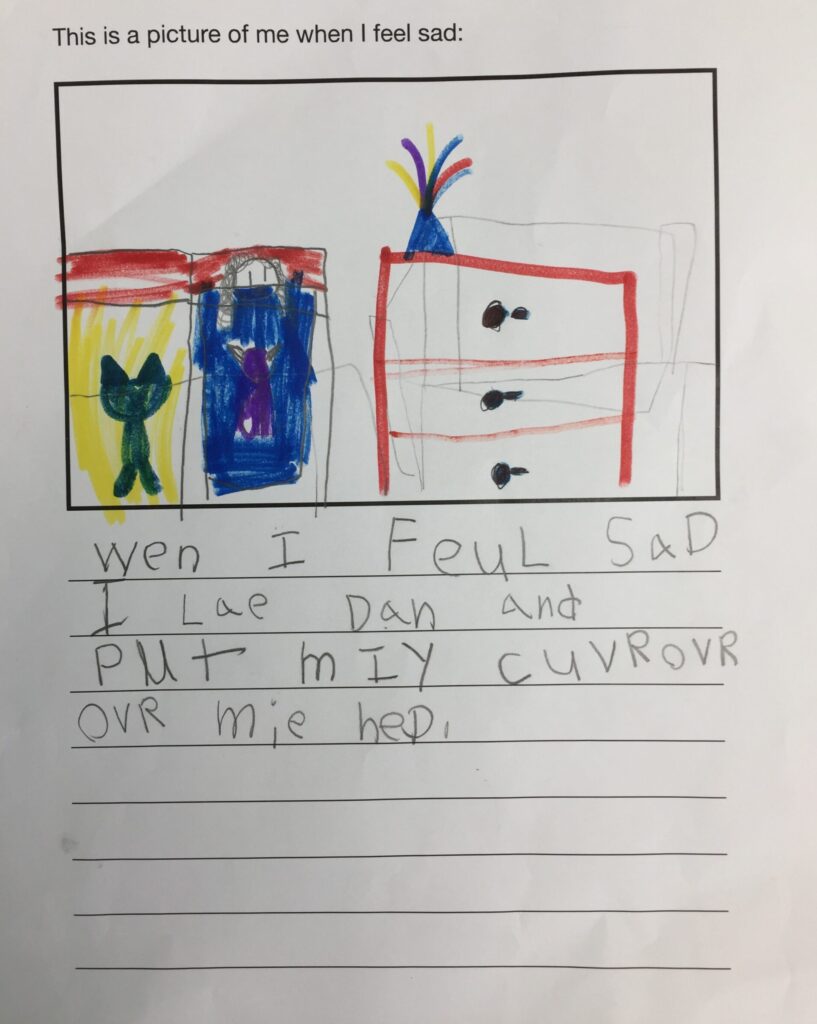
Social-Emotional Learning Integrated Writer’s Workshop Unit
An inquiry–based SEL unit, “When I Feel Sad/Angry/Anxious, I Can ___,” follows CASEL’s Social-Emotional Learning Framework integrating state standards in literacy.
Using Read Alouds, Shared Writing and Independent Writing prompts, students explore happy/sad/angry/anxious emotions: how to identify and understand how they and others feel, and what good strategies are for coping. Strategies and ideas are student-generated. Students’ writings are collected and bound into a Strategy Book that lives on the classroom Calm Table, where students can refer to it as needed.
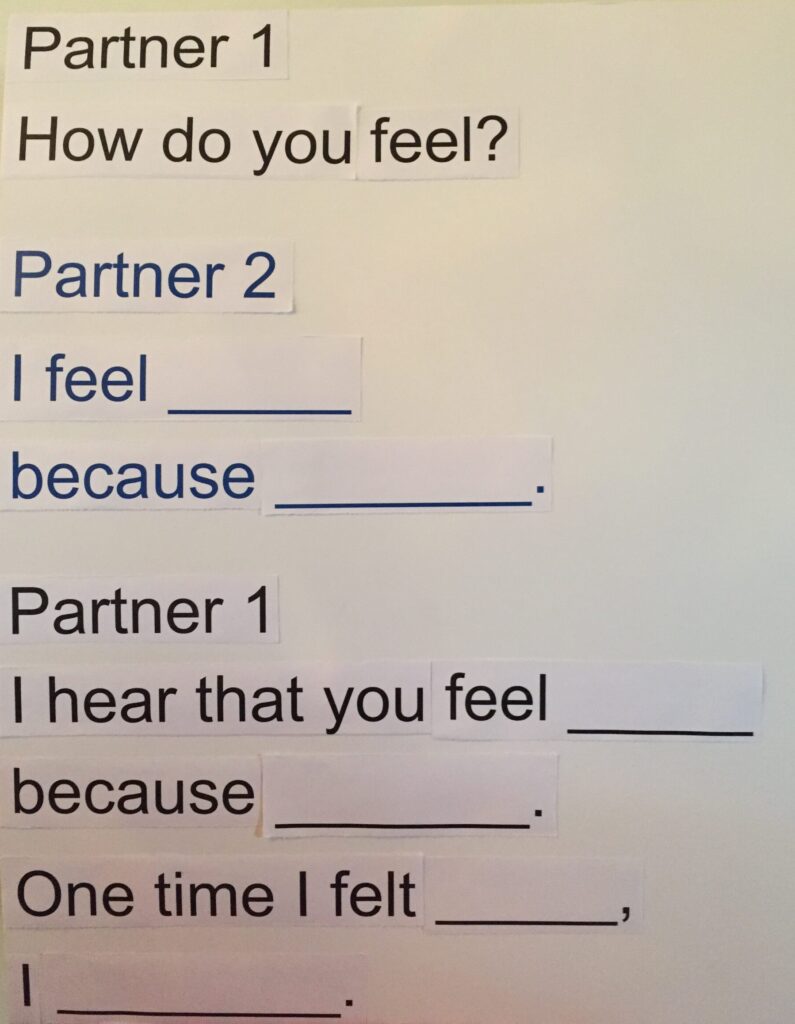
Empathy Education
Once students have a foundational understanding of how to identify, express and shift emotions, social-emotional learning work can rise to the next level: empathy education.
Using reflective listening practices, students learn the skills needed to empathize with and support one another inside and outside the classroom.
